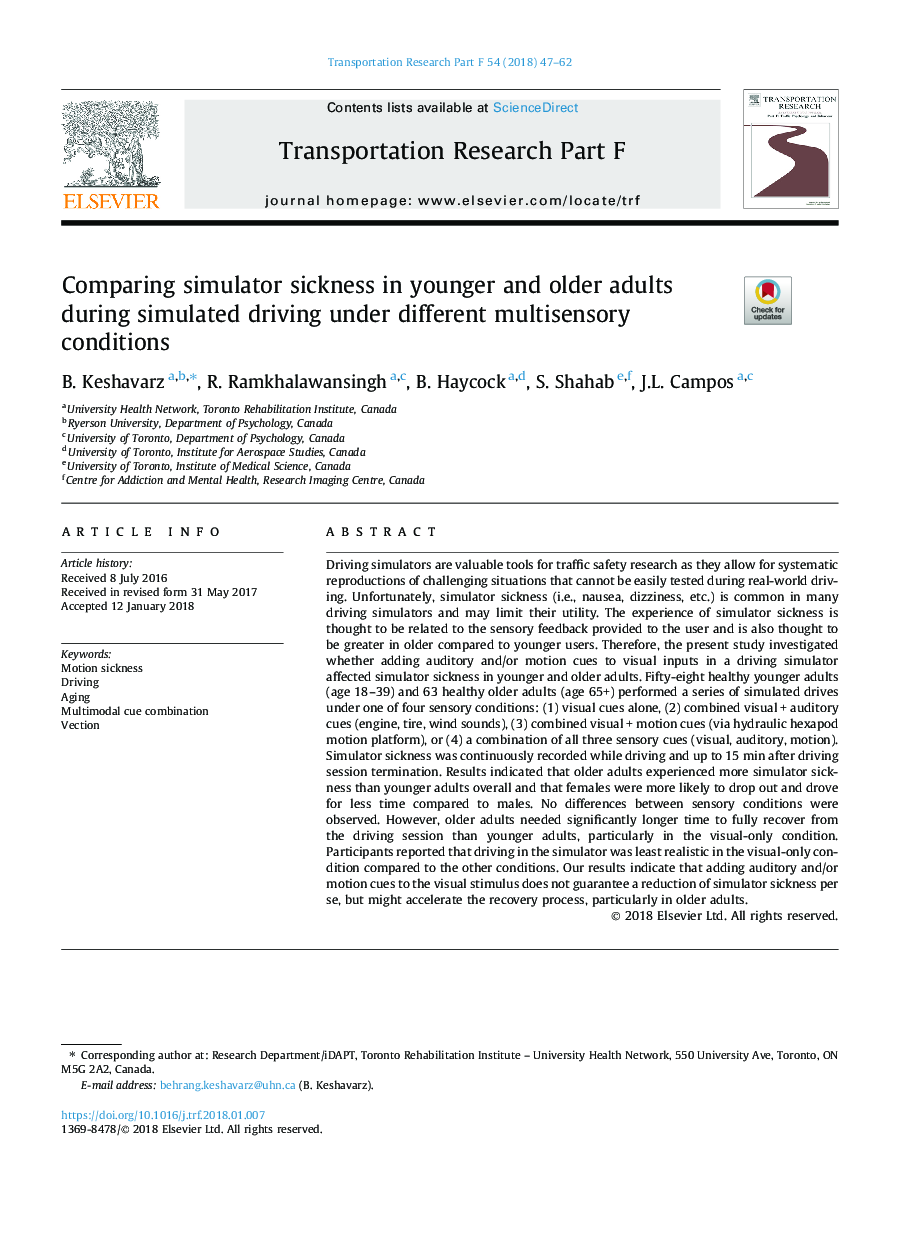| کد مقاله | کد نشریه | سال انتشار | مقاله انگلیسی | نسخه تمام متن |
|---|---|---|---|---|
| 7257842 | 1472432 | 2018 | 16 صفحه PDF | دانلود رایگان |
عنوان انگلیسی مقاله ISI
Comparing simulator sickness in younger and older adults during simulated driving under different multisensory conditions
ترجمه فارسی عنوان
مقایسه بیماری های شبیه ساز در افراد جوان و سالمند در هنگام رانندگی شبیه سازی شده در شرایط مختلف چند وضعیتی
دانلود مقاله + سفارش ترجمه
دانلود مقاله ISI انگلیسی
رایگان برای ایرانیان
کلمات کلیدی
دریازدگی، رانندگی، سالخورده، ترکیب نشانه چندملیتی، ویروس،
موضوعات مرتبط
علوم انسانی و اجتماعی
روانشناسی
روان شناسی کاربردی
چکیده انگلیسی
Driving simulators are valuable tools for traffic safety research as they allow for systematic reproductions of challenging situations that cannot be easily tested during real-world driving. Unfortunately, simulator sickness (i.e., nausea, dizziness, etc.) is common in many driving simulators and may limit their utility. The experience of simulator sickness is thought to be related to the sensory feedback provided to the user and is also thought to be greater in older compared to younger users. Therefore, the present study investigated whether adding auditory and/or motion cues to visual inputs in a driving simulator affected simulator sickness in younger and older adults. Fifty-eight healthy younger adults (age 18-39) and 63 healthy older adults (age 65+) performed a series of simulated drives under one of four sensory conditions: (1) visual cues alone, (2) combined visualâ¯+â¯auditory cues (engine, tire, wind sounds), (3) combined visualâ¯+â¯motion cues (via hydraulic hexapod motion platform), or (4) a combination of all three sensory cues (visual, auditory, motion). Simulator sickness was continuously recorded while driving and up to 15â¯min after driving session termination. Results indicated that older adults experienced more simulator sickness than younger adults overall and that females were more likely to drop out and drove for less time compared to males. No differences between sensory conditions were observed. However, older adults needed significantly longer time to fully recover from the driving session than younger adults, particularly in the visual-only condition. Participants reported that driving in the simulator was least realistic in the visual-only condition compared to the other conditions. Our results indicate that adding auditory and/or motion cues to the visual stimulus does not guarantee a reduction of simulator sickness per se, but might accelerate the recovery process, particularly in older adults.
ناشر
Database: Elsevier - ScienceDirect (ساینس دایرکت)
Journal: Transportation Research Part F: Traffic Psychology and Behaviour - Volume 54, April 2018, Pages 47-62
Journal: Transportation Research Part F: Traffic Psychology and Behaviour - Volume 54, April 2018, Pages 47-62
نویسندگان
B. Keshavarz, R. Ramkhalawansingh, B. Haycock, S. Shahab, J.L. Campos,
